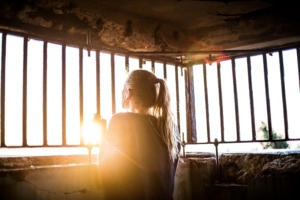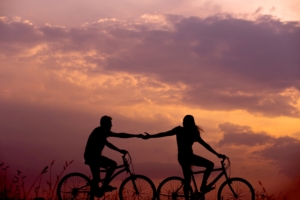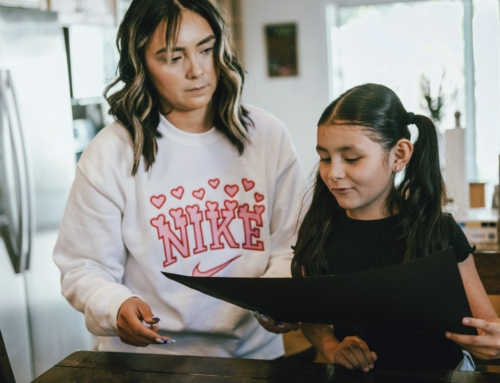Codependency is a term that is often misused. People may think that someone is in a codependent relationship when the couple relies heavily on one another. Others may be concerned about codependent behavior in themselves, or someone they care about but are not fully sure what the signs of codependency are.
God wired us for relationships. We all long to be connected, though sometimes those relationships don’t play out quite as God intended them. In this article, we are going to define codependency, look at common signs and behaviors, and talk about ways to help these relationships thrive.
What is Codependency?
 The definition of codependency can be confusing for people. These relationships are characterized as being primarily one-sided. Friendships, family relationships, and marriages can all be affected by codependency. In these relationships, one person relies on the other person to meet all their needs. The other partner needs to be needed.
The definition of codependency can be confusing for people. These relationships are characterized as being primarily one-sided. Friendships, family relationships, and marriages can all be affected by codependency. In these relationships, one person relies on the other person to meet all their needs. The other partner needs to be needed.
Codependency was first identified in the drug and alcohol addiction community. In these settings, it was the classic case of one person enabling the other person’s addiction. As time progressed other addictions, behaviors, and relationship patterns have also proven to be susceptible to this dependent/enabler cycle. Today we know that any type of relationship can become codependent, regardless of whether addiction is involved.
These relationships are often connected to childhood trauma, abuse, or neglect. They may also occur in a situation where a child had an ill parent and so the family dynamic was out of balance. Another common situation is in families where emotions, problems, and difficulties were not discussed.
Often children raised in homes with a parent who had an addiction will grow up to form these relationships. We don’t fully know what causes a codependent relationship to form, these are some of the most common childhood situations that come into play.
Signs of Codependent Behavior
Perhaps the easiest way to understand these relationships is to look at the common signs and behavior shown by those in a codependent relationship. Remember, not all of these must be present for a relationship to be codependent. Your counselor can help you determine whether you’re in one of these relationships. Common behaviors and signs include:
 Feeling trapped in a relationship
Feeling trapped in a relationship- Low self-esteem
- Constant fear of rejection
- A need to be needed by the other person
- People-pleasing behaviors
- Lack of emotional vulnerability
- Lack of appropriate boundaries
- Lack of personal interests, desires, or dreams outside of what the other person wants
- Remaining in an abusive, hurtful, or dysfunctional relationship
- Reacting as though everything is personal or a personal attack
- Lying
- Manipulation
- Using guilt to control the other person’s actions
- A high desire for, and need of, control
- Controlling behavior and actions toward the other person
- Obsessing over the other person
- Ignoring or denying the problem
- Ignoring one’s gut instinct, morals, ideals, and values in favor of the other person’s wants
- Anxiety, depression, and/or anger over the relationship
Note: Abuse is often common in these relationships. If you are in an abusive situation, please get yourself safe first. The relationship may be able to be mended with time, counseling, and support. But the first step is to get out of that situation and to safety.
Codependent people often engage in addictive behaviors. These are usually an effort to numb emotions or escape the pain of the relationship. This can become a major problem. The other partner becomes an enabler often out of a desire to not hurt their partner or cause conflict in the relationship. One may make excuses for their addicted partner, lie for them, or even make personal sacrifices so they can continue to afford their addiction.
In many situations, the addiction will need to be treated before any sort of reconciling can take place within the relationship. In-patient or out-patient addiction treatment should be included. Often addiction treatment programs address codependency as part of the treatment plan. There are even in-patient programs in which the family regularly comes to counseling to identify enabling and codependent patterns.
Outside Support for Identifying Codependent Behavior
 In many cases, friends or family members may notice a problem. It can be awkward for them to speak up about this. They may not come right out and say something to you about it but may make indirect comments or ask questions. If you have concerns about one of your relationships, it can be eye-opening to ask those around you. They may offer insight into your situation that you never would have identified otherwise.
In many cases, friends or family members may notice a problem. It can be awkward for them to speak up about this. They may not come right out and say something to you about it but may make indirect comments or ask questions. If you have concerns about one of your relationships, it can be eye-opening to ask those around you. They may offer insight into your situation that you never would have identified otherwise.
If you have concerns about someone in your life, prayerfully consider whether it is an appropriate situation for you to step into. Many (but certainly not all) of these relationships also have some sort of emotional or physical abuse involved. By reaching out, you may provide a valuable lifeline to someone trying to figure out how to get out of an abusive situation.
All it takes is one person who knows what is going on. All it takes is one person to serve as an ally to help someone get out of an abusive situation. Even if abuse is not involved, being in a relationship like this can be destructive in many ways.
We know it can be difficult to enlist the help of a counselor. The counselor can help facilitate discussions, guide people into bringing concerns to loved ones, and help couples overcome these tendencies.
Help for Codependent Relationships
There is hope for forming a healthy relationship. Romantic couples, friends, or relatives will all need a slightly different approach since the dynamics of each relationship is different. You will need to work with a counselor to figure out the best course of support is for your situation. Common approaches include:
Finding Unique Interests:
Each person has become so enmeshed with the other they may have forgotten their old interests. It can be healing for people to find their own hobbies, interests, and passions. Taking separate classes from one another is a good option. Then you have something to talk about and share with one another while pursuing something you’re interested in, or something new.
Often people will pick up a former hobby, sport, art form, recreational activity, social event, etc. they used to enjoy. While shared interests are great, it is critical for those overcoming a codependent relationship to find their own interests.
 12-Step Programs: Codependents Anonymous and other similar programs based on the 12-Step model can be helpful. These usually meet in person but may also meet online. Codependency is often its own form of addiction and needs to be treated as such.
12-Step Programs: Codependents Anonymous and other similar programs based on the 12-Step model can be helpful. These usually meet in person but may also meet online. Codependency is often its own form of addiction and needs to be treated as such.
Support Groups: Connecting with others who are on the same journey is a powerful experience. It helps us not to feel so alone and gives us a place to bounce ideas off one another. We can also share support and form a community during a difficult time. Counseling offices, churches, community centers, and other locations host support groups.
Counseling: Working with a counselor is critical in these relationships. The counselor will help each person understand their damaging behaviors, figure out why they got into this relationship in the first place, heal wounds, and so much more. Counseling will usually take place 1:1 as well as with both people together.
Family Counseling: Often the entire family benefits from coming together for counseling. Children may be modeling the codependent behaviors they see in their parents. Or they may be dealing with hurt, confusion, or other feelings. Bringing the entire family together is also important in cases of addiction. Your counselor will help you decide if, and when, family counseling should take place.
We hope this has helped shine some light onto an often-misunderstood relationship dynamic. If you’re in one of these relationships, have hope. We are here to help you heal your relationship. If you have concerns about a loved one, please reach out. We can help you guide them towards healing as well.
“Caged”, Courtesy of Christopher Windus, Unsplash.com, CC0 License; “Don’t Let Go”, Courtesy of Everton Vila, Unsplash.com, CC0 License; “Freedom”, Courtesy of Fuu J, Unsplash.com, CC0 License; “Clouds Over the Lake”, Courtesy of Ingo Doerrie, Unsplash.com, CC0 License










